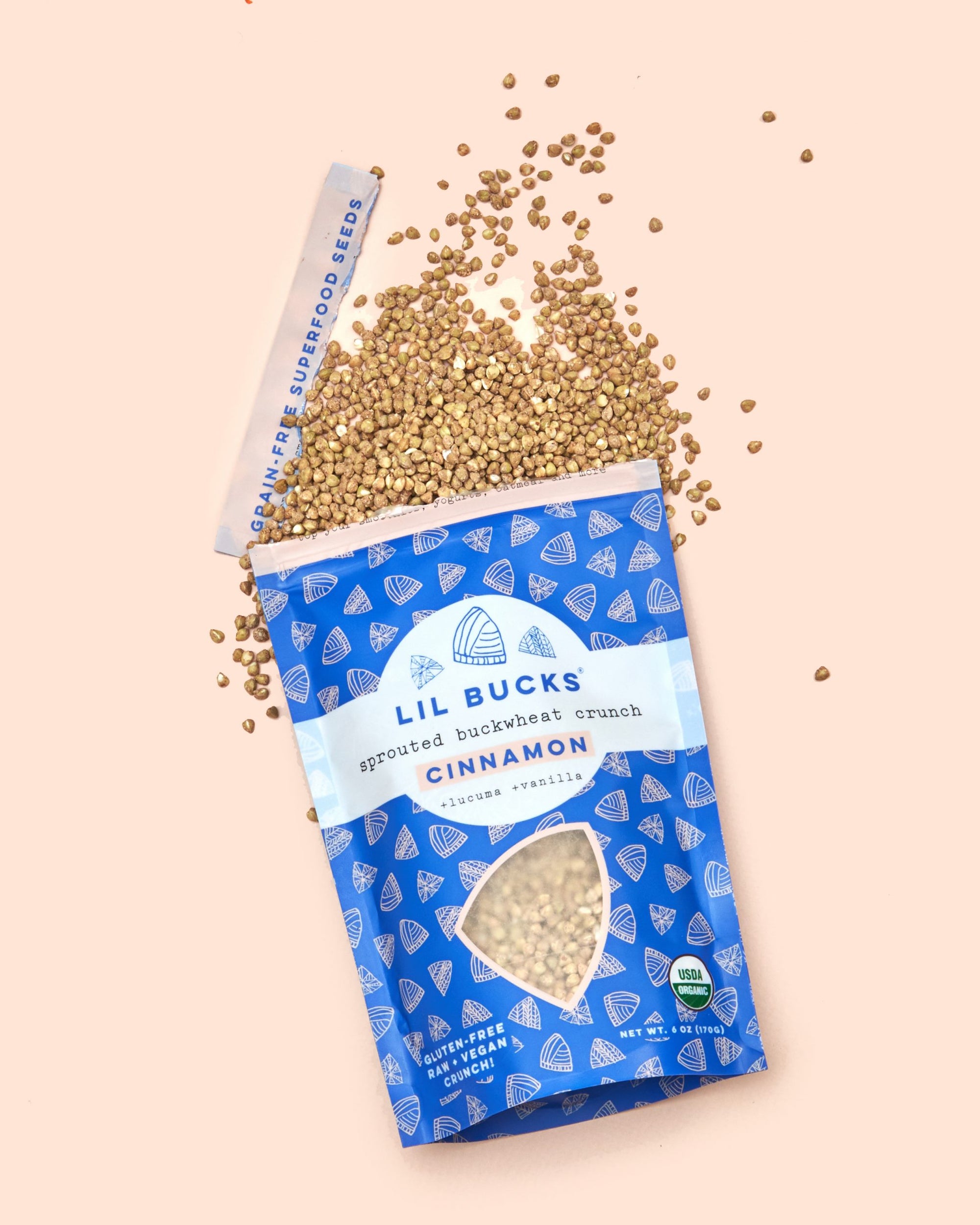

· By Emily, Founder
“LOW GLYCEMIC” ~ WHAT DOES THIS MEAN AND WHY SHOULD I CARE?
As a consumer it can be incredibly tricky keeping up with all the nuances in the health industry! People are constantly throwing products and foods in your face screaming “THIS IS IT! THIS NEW DIET WILL END POVERTY, PROMOTE WORLD PEACE AND MAKE YOU BEAUTIFUL!” Wow, amazing! Who knew drinking matcha tea could do that?!
Worry not, my friends. We at Lil Bucks are promoting benefits you can get from buckwheat. While the buckwheat benefits truly align with wellness trends, we want to share why you should even care about these health benefits. We promise we’re not just promoting wellness buzzwords for the sake of it!
One of the great benefits of buckwheat is that it’s low glycemic, meaning it’s great for your digestion and blood sugar levels. That’s why buckwheat is often considered such a heart-healthy food!
Below we share how the glycemic index works and how to interpret it, so you can understand how this works with your body and why you should be stoked that buckwheat is low glycemic!
THE GLYCEMIC INDEX, DEMYSTIFIED
Many products claim to be "low glycemic," but understanding the glycemic index adds depth to this term. Developed by Dr. David Jenkins in the '80s, the glycemic index ranks carb-containing foods based on their impact on blood sugar levels. Diets with lower glycemic index values are associated with healthier body mass indexes, lower cholesterol levels, and a reduced risk of type 2 diabetes.
The glycemic index of a food is influenced by several factors like:
- The type of sugar it contains
- The overall structure of the starch
- How your meal was cooked and prepared
- The level of ripeness of the particular food.

High glycemic foods result in a quick spike in insulin and blood sugar (also known as blood glucose). Low glycemic foods have a slower, smaller effect.
SUGAR SUGAR…
Sugar often has a bad rep in the health world, and we’re the first to complain about the overuse of processed sugar EVEN in organic health products. Even the healthiest organic granola contains 6-8 grams of added sugar per serving.
But to give a blanket statement that all sugar is evil is not accurate. You don’t want to eliminate all the sugar in your diet, because your body does need some sugar to perform some of its vital duties! Try to consumer more natural sugar (from fruits, veggies, etc.), which is often naturally paired with fiber, protein and/or other vital nutrients, to help you digest more slowly. Added sugars (sugar extracted from its original source and added to foods in cooking/processing) can go straight to the blood stream cause faster blood sugar spikes, so you want to limit these (look out for ingredients ending in “ose” on packaging!).

STARCHES & HOW PREPARING YOUR FOOD HAS AN EFFECT ON THE GLYCEMIC INDEX
Now let’s look at starches! Two molecules make up starches: amylose and amylopectin. Amylose takes longer to digest, and therefore foods with a higher amylose content will have a lower glycemic index.
The more refined and processed the carb is, the higher the glycemic index. This is because processing methods disrupt the amylose and amylopectin molecules. The longer the food is cooked, the faster the sugars will be digested, which then raises the glycemic index. Foods like white bread and white rice, which are more processed for example, are easily digested and cause a spike in blood sugar and insulin levels. This can be extremely harmful for diabetics, and also contribute to heart diseases and obesity.
With fruit, the riper the fruit, the higher the glycemic index. Unripe fruits contain complex carbs that break down sugar as the fruit ripens.
READING THE GLYCEMIC SCALE
Okay, so now you’re thinking how in the heck do I read the glycemic scale?! DO NOT FRET! It’s easier than you think! When reading the scale, you need to focus on the glycemic load of a food.
The glycemic load of a food is the GI of a food multiplied by the amount of carbs in a food- specifically the amount of grams- in a single serving. So if you decide to eat a low GI food but a large quantity of it, you could actually have the same effect as if you ate a high GI food! So portion control is extremely important as well!
For example white bread has a GI of 75. Grain bread on the other hand has a GI of 53. You can swap white bread for grain bread to lessen the post meal blood sugar rise!

FOODS THAT ARE LOW-GLYCEMIC
Foods with a lower glycemic index are preferred because they are slowly digested and cause a smaller and slower rise in blood sugar levels (this is especially important for women and hormonal health!).
Buckwheat, depending on how it’s prepared, scores low to medium on the glycemic index and should not cause unhealthy spikes in blood sugar levels. We serve all our buckwheat raw, sprouted and dehydrated, putting these seeds on the lower end of the GI scale. They leave you full for longer and you don’t get any crazy blood sugar spikes after eating sprouted buckwheat. Other foods that possess a lower GI are fruits and vegetables, chickpeas, and lentils!
POWER COMBO: pair Lil Bucks with an additional protein or healthy fat like an avocado on fermented sourdough! This will slow digestion and help keep you movin’ and groovin’ for longer!
We hope this was helpful for you in choosing the foods that fuel your life. Being a conscientious consumer is so important! Your diet extends far beyond what you may think. It can impact your energy levels, mood, weight, etc. Give your body the best, so it can perform at its best!

Sources:
https://www.healthline.com/nutrition/foods/buckwheat#nutrients
https://www.healthline.com/health/food-nutrition/added-sugar-natural-sugar-guide
https://drsue.ca/2010/10/benefits-to-barley-and-buckwheat-low/

